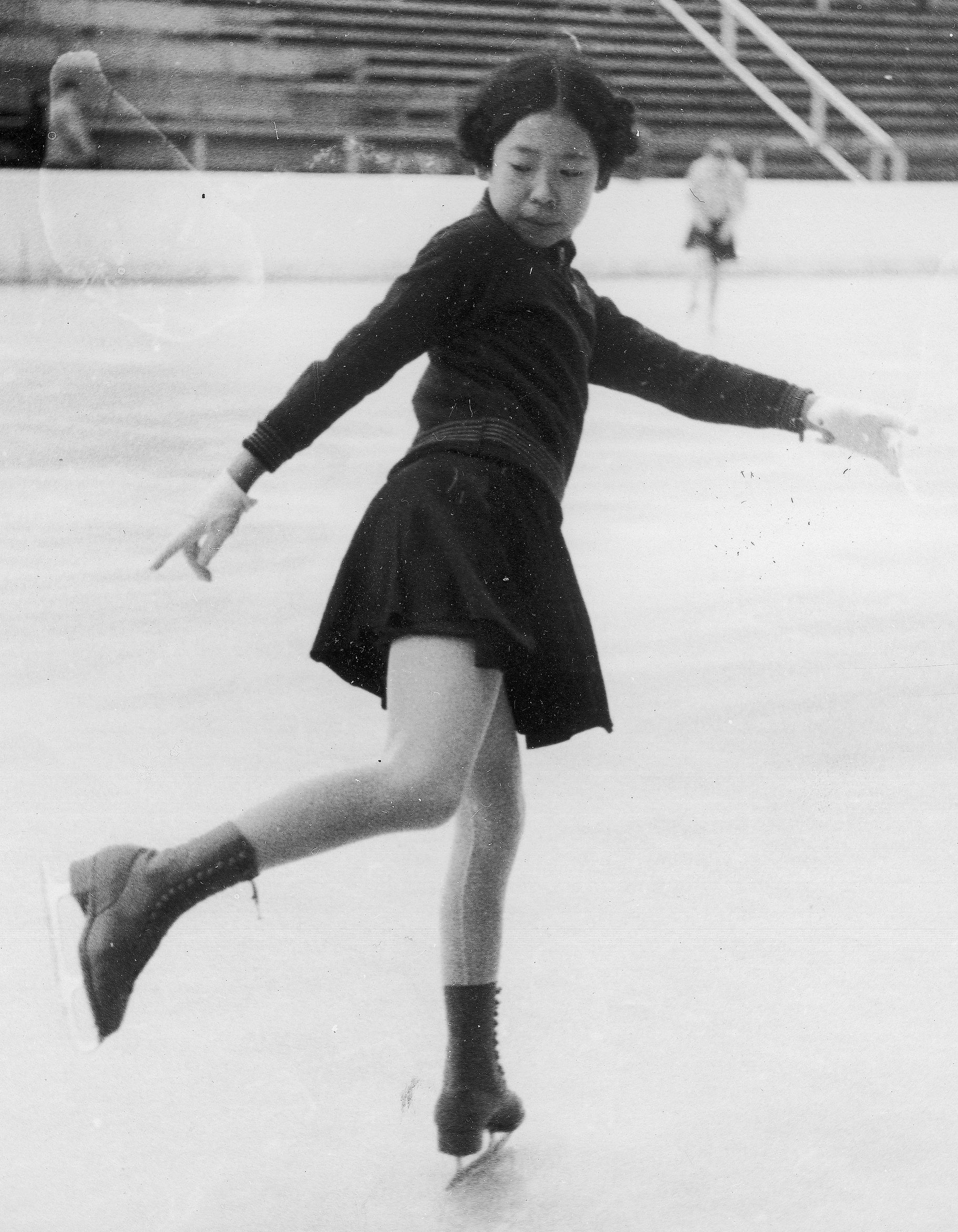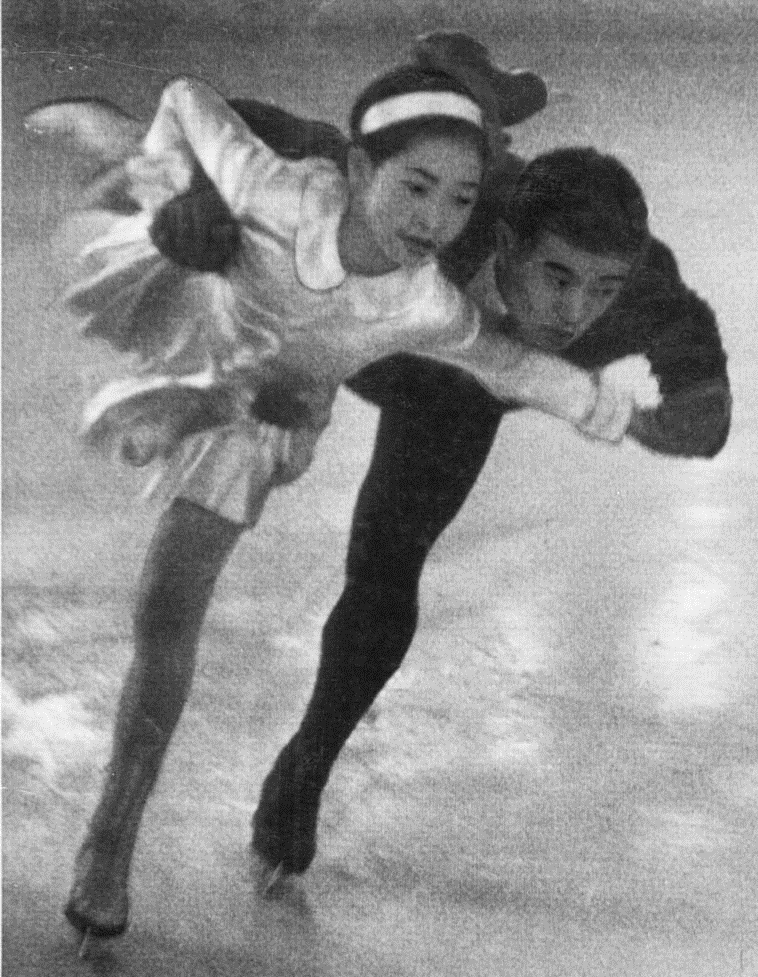1. Overview
Etsuko Inada (稲田 悦子Inada EtsukoJapanese) was a pioneering Japanese figure skater and coach, best known for being the first female athlete to represent Japan at the Winter Olympics. A seven-time Japanese national champion, she achieved her first national title at a young age before making a historic debut at the 1936 Garmisch-Partenkirchen Winter Olympics at just 12 years old, making her the youngest Japanese Olympian in history across both summer and winter games. Her career spanned the pre-war and post-war eras, during which she continued to achieve national success and participate in international competitions. After retiring from competitive skating, Inada became a highly respected coach, mentoring future Olympians and even teaching members of the Japanese Imperial family. Her life and achievements left a lasting legacy, inspiring cultural works and solidifying her status as a foundational figure in Japanese women's sports.
2. Early life and education
Etsuko Inada was born on February 8, 1924, in Osaka, Japan, as the youngest daughter of the Inada Watch Shop family. Her natural talent for figure skating became evident after she began training at the age of eight in 1932, under the guidance of coach Nagai Yasumi. Inada pursued her education at Baika Girls' High School, and after graduation, she furthered her studies by learning English at a specialized school.
3. Skating career
Etsuko Inada's skating career was marked by significant achievements both before and after World War II, highlighted by her groundbreaking Olympic debut and continued dominance in national championships.
3.1. Pre-war career and Olympic debut

Inada quickly rose through the ranks of Japanese figure skating. She secured the All-Japan Junior Championship title in the 1933-34 season, followed by her first All-Japan Championship victory in the 1934-35 season, becoming the inaugural champion of the women's singles division. In November 1935, during the Japanese national team selection trials, she achieved an impressive total score of 1745.3 points, outperforming her closest competitor, Tamako Togo, by over 300 points. Her performance, especially in school figures and free skating, garnered immense praise from newspapers, with one critic noting, "Even with her small physique, her large figures in school figures are sufficient, and the accuracy of her turns is beyond even the men." Upon hearing of her selection for the Olympics, she famously remarked, "The only one I'm afraid of is Sonja Henie."
In January 1936, Inada competed at the European Figure Skating Championships held in Berlin, Germany. During this event, she had the notable experience of shaking hands with Adolf Hitler, the German leader.
The pinnacle of her early career was her participation in the 1936 Winter Olympics in Garmisch-Partenkirchen, Germany, in February 1936. At just 12 years old, Inada became the youngest Japanese Olympian in history, a record that stands to this day for both summer and winter games. Her appearance also marked her as the sole Japanese female athlete to compete in a Winter Olympics before World War II, cementing her legacy as a trailblazer for women's figure skating in Japan. For her Olympic performance, Inada wore a white costume adorned with a red carnation, which was provided by the Japanese Women's Association of Berlin. She skated to German military march music, gaining considerable popularity among the spectators. Her costume, a significant historical artifact, is now preserved at the Prince Chichibu Memorial Sports Museum, where its original chest-mounted Japanese flag appliqué and carnation were restored in her later years according to her wishes. Inada finished 10th out of 26 competitors at the Olympics. Despite her placement, Sonja Henie of Norway, who won her third consecutive Olympic gold medal at the same event, predicted Inada's future success, stating, "Inada's era will surely come in the near future." Inada, who admired Henie after watching her practice, later visited Henie's home in Oslo. During the opening ceremony of the Garmisch-Partenkirchen Olympics, Inada and speed skater Kunio Nando reportedly shook hands with Hitler, who was attending the games. Upon seeing the 50 in (127 cm) tall Inada, Hitler is said to have inquired to his aides, "What is that little girl doing here?"
Following the Olympics, Inada competed in the World Figure Skating Championships in Paris, France, in March 1936, where she also finished 10th. She continued her dominance in Japan, winning the All-Japan Women's Singles Championship for five consecutive years from 1937 to 1941. This record stood until 1977 when it was surpassed by Emi Watanabe. In recognition of her achievements, composer Kunihiko Hashimoto wrote the march "Joyful Skater" in 1938, which was released on a Victor record alongside Walter Peters' waltz "Rising Sun."

Inada was a strong contender for the 1940 Winter Olympics planned for Sapporo, Japan. However, the prolonged Sino-Japanese War and deteriorating international relations led Japan to relinquish its hosting rights in 1938, denying Inada the opportunity for a second Olympic appearance.
During World War II, Inada traveled to Manchuria as part of a comfort visit, where she famously skated on a frozen river. She experienced the end of the war in 1945 while in Nara Prefecture and married the following year.
3.2. Post-war comeback and later career
After the war, Etsuko Inada made a return to competitive skating in 1949, though she also experienced a divorce in her personal life during this period. She notably won a competition shortly before the scheduled 1949 Japanese national championships, which were ultimately canceled due to unexpectedly warm weather.
In 1951, Inada secured her seventh All-Japan Women's Singles Championship title. She then traveled to Italy to compete in the 1951 World Figure Skating Championships alongside Ryusuke Arisaka, marking Japan's first appearance at the World Championships in 15 years. This period presented significant challenges for Inada, including having to substitute men's long underwear for proper skating tights. Furthermore, her choice of music was considered outdated compared to the global trends in figure skating. Despite her efforts, she placed 21st out of 23 competitors. Inada officially retired from competitive skating in 1952.
4. Post-retirement activities
Following her retirement from competitive skating, Etsuko Inada dedicated herself to various professional and social endeavors, primarily focusing on coaching and entrepreneurial pursuits.
4.1. Coaching career
Upon her retirement in 1952, Inada transitioned into a highly influential role as a figure skating coach. She was instrumental in developing the talents of several notable athletes who would go on to become Olympic skaters, including Miwa Fukuhara, Junko Hiramatsu (also known as Junko Ueno), and Haruko Okamoto (also known as Haruko Ishida). Her coaching activities extended to providing figure skating instruction to members of the Japanese Imperial Family, a testament to her esteemed reputation within the sport. She coached at a rink located in front of the Prince Chichibu Memorial Sports Museum, which today houses her Olympic costume.
4.2. Other activities
Beyond her coaching career, Inada also ventured into business, opening a boutique in Aoyama, Tokyo. This further demonstrated her diverse interests and professional engagements after her competitive years.
5. Philosophy and personal life
Etsuko Inada's personal life saw both joys and challenges, including her marriage and subsequent divorce. Throughout her life, she held strong principles regarding competitive sports and personal achievement. She was known for her direct and unwavering belief that "participation in the Olympics is a lie. You must succeed in the one chance you get in the actual competition and become first." This philosophy underscored her competitive drive and commitment to excellence. Her lifelong conviction was encapsulated in her motto: "Effort, effort, effort to be the world's best."
6. Death
Etsuko Inada passed away on July 8, 2003, at the age of 79, due to stomach cancer in a hospital in Chiba City. Her funeral service was held at Tsukiji Hongan-ji in Tokyo. Given her significant connection to the Imperial Family through her coaching, the funeral was notably attended by the Emperor and Empress of Japan, along with many other members of the Imperial Family, who offered their condolences and floral tributes.
7. Legacy and influence
Etsuko Inada's impact on Japanese sports, particularly figure skating, was profound and continues to be recognized.
7.1. Historical significance
Inada is widely regarded as a pivotal and pioneering figure in Japanese women's figure skating. Her historic participation in the 1936 Garmisch-Partenkirchen Winter Olympics at the age of 12 established her as the youngest Japanese Olympian in history, a record that remains unbroken across both summer and winter games. Furthermore, she stands as the only Japanese female athlete to have competed in a Winter Olympics before World War II. Her record of winning seven Japanese national championships, including five consecutive titles from 1937 to 1941, solidified her status as one of Japan's most dominant pre-war skaters. Her career laid crucial groundwork for future generations of Japanese figure skaters.
7.2. Cultural references
Etsuko Inada's compelling life story has served as an inspiration for various cultural works. She is widely considered the model for the figure skating coach character in Nakanishi Rei's novel, Teruteru Bozu no Teruko-san (Teruko-san, the Sun-Shine Doll), published by Shinchosha. This novel was later adapted into the 2003 NHK television drama Teruteru Kazoku (Teruteru Family), where the character inspired by Inada, named Inamoto Eiko, was portrayed by actress Yoko Ishino.
8. Competitive highlights
| Event | 1933-34 | 1934-35 | 1935-36 | 1936-37 | 1937-38 | 1938-39 | 1939-40 | 1940-41 | 1948-49 | 1949-50 | 1950-51 | 1951-52 |
|---|---|---|---|---|---|---|---|---|---|---|---|---|
| Olympics | 10th | |||||||||||
| Worlds | 10th | 21st | ||||||||||
| Europeans | 9th | |||||||||||
| Japan | 1st | 1st | 1st | 1st | 1st | 1st | 1st | |||||
| National Sports Festival | 1st | 1st | 1st | 1st | 1st | 1st | ||||||
| Japan Jr. | 1st |